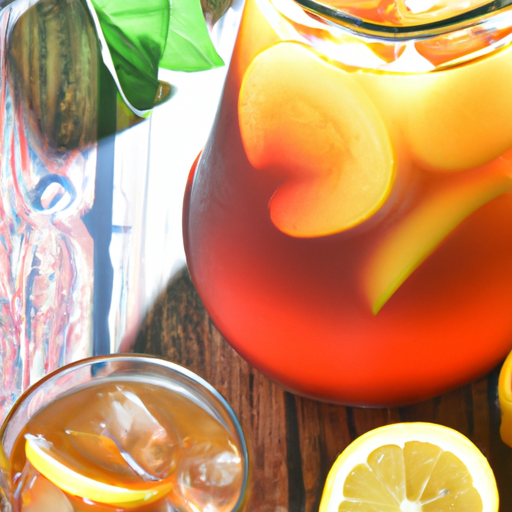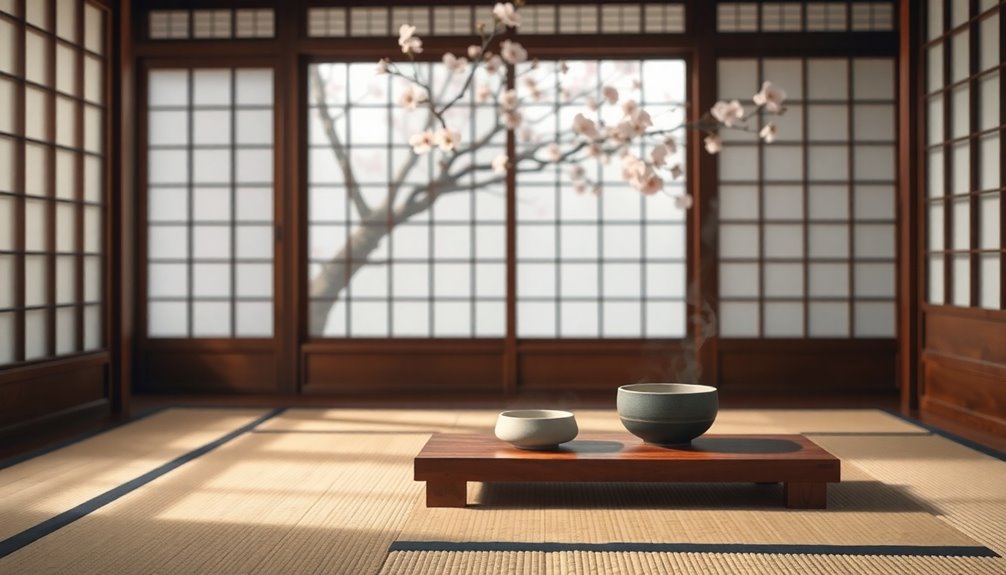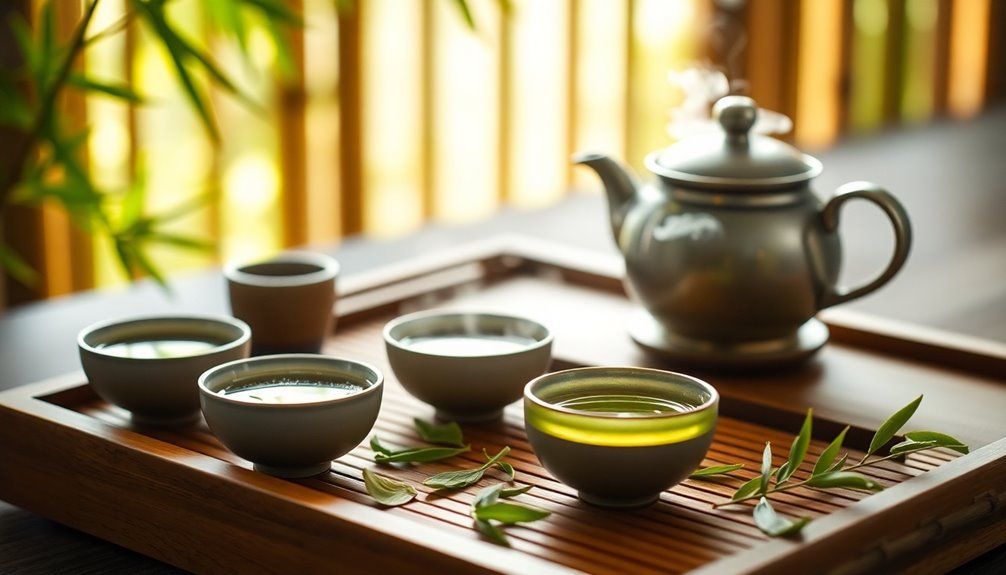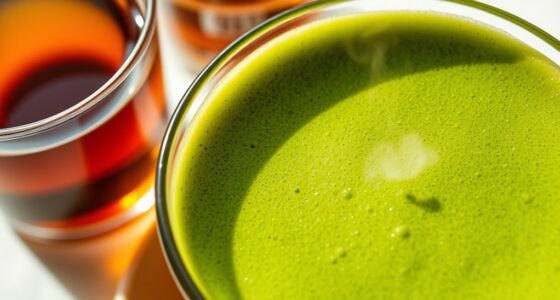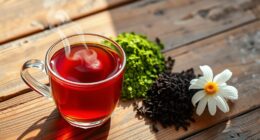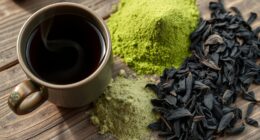If you're looking for an exciting adventure, Japan's tea farms are a must-visit! Here are some amazing places you shouldn't miss:
- Shizuoka Prefecture: The heart of Japan's green tea with stunning views.
- Uji Region: Famous for top-notch Matcha and rich history.
- Kagoshima: Offers unique flavors from volcanic soil.
- Mie Prefecture: Known for its delicious shaded Kabuse Sencha.
You'll love picking tea leaves, experiencing traditional ceremonies, and enjoying the incredible scenery! Every farm is a treasure, waiting to share its stories. Stick around to discover even more fun facts about these delightful spots!
Key Takeaways
- Explore Shizuoka Prefecture, the heart of Japan's green tea production, known for its scenic landscapes and vibrant tea culture.
- Visit Uji, famous for high-quality Matcha and its historical significance in Japanese tea ceremonies.
- Discover Mie Prefecture's Kabuse Sencha, a unique shaded tea variety that offers a distinct flavor profile.
- Experience Kagoshima's unique tea flavors shaped by its volcanic soil and salty breezes, perfect for adventurous tea lovers.
- Immerse yourself in the tea traditions of Yamaguchi Prefecture, where 90% of its foggy landscape produces high-quality tea.
Introduction

Have you ever wondered where some of the world's finest green tea comes from? Japan is home to stunning green tea farms, especially in regions like Shizuoka and Uji. These areas are responsible for nearly 40% of Japan's green tea production!
When you visit a tea farm, you can dive into a world of flavor and tradition.
Picture this: vibrant tea fields stretching as far as the eye can see. You could participate in tea picking during the harvest season, which starts in early May. It's a fun and exciting way to enjoy the outdoors!
Many farms also let you learn about traditional tea preparation and processing from friendly local farmers.
If you want to soak up the full experience, consider staying overnight at a tea farm. You'll get to know the rich culture and history of Japanese tea cultivation.
Plus, the scenic landscapes, like the beautiful Haruno Mountains, make your visit even more special.
Tea Cultivation Traditions in Japan

Japanese tea cultivation is steeped in rich traditions that date back to the 9th century. It all started when Buddhist priest Eisai brought tea plants from China, highlighting its health benefits. Since then, tea farmers have been perfecting their craft, ensuring that every cup of green tea tells a story.
In the 1500s, the Japanese tea ceremony emerged, adding a beautiful ritual to tea making. This tradition not only celebrates tea but also brings people together in a special way. You might find that regions like Uji are famous for their high-quality Matcha, which is often featured in these ceremonies.
Here are some fun facts about tea cultivation in Japan:
- Farmers use innovative shading techniques, like the tana method, to enhance flavors in premium teas.
- The tea leaves are meticulously steamed and shaped, giving them that lovely needle-like appearance.
- Most Japanese tea is Sencha, but Matcha steals the show during ceremonies.
Visiting tea farms, you'll see how these traditions come alive! You'll discover the hard work and dedication that goes into each cup, making every sip a delightful experience.
Tea Varieties by Region

Exploring the diverse tea varieties across Japan reveals a tapestry of flavors influenced by regional climates and cultivation techniques.
Each region has its own special tea plantation, producing unique kinds of Japanese Green Tea that delight your taste buds!
– Shizuoka Prefecture: This area is the heart of Japan's green tea production, providing nearly 40% of the country's supply.
You'll find diverse tea gardens here, both in cities and the countryside.
– Mie Prefecture: Famous for Kabuse Sencha, this shaded variety has a distinct flavor!
The shading process adds a delicious twist you won't want to miss.
– Fukuoka Prefecture: Known for gyokuro tea, this region contributes to half of Japan's gyokuro supply.
Its rich soil and perfect climate create a truly special brew.
- Kagoshima Prefecture: Salty breezes and volcanic soil make the tea here unique, offering a flavor you can only find in this area.
- Yamaguchi Prefecture: With 90% of its tea grown in foggy conditions, this region ensures high-quality tea varieties that are simply exquisite.
Cultural Rituals Surrounding Tea Ceremonies

Tea isn't just about the drink; it's woven into the fabric of Japan's culture through the art of the tea ceremony, known as "chanoyu." This ritual emphasizes harmony, respect, purity, and tranquility, creating a serene environment where participants can appreciate the subtleties of matcha.
During the tea ceremony, you'll see beautiful, carefully choreographed movements. The preparation and serving of matcha green tea is an art form, where every detail matters. You might notice seasonal decorations that reflect the time of year, reminding everyone of nature's beauty.
The roots of this tea ceremony are steeped in tradition, going back to Zen Buddhism in the 12th century. It was a legendary priest named Eisai who helped promote its spiritual meaning. Over time, different styles have emerged, making the ceremony accessible to everyone.
Here are some key points about the tea ceremony:
- Focus on harmony and respect
- Appreciate the beauty of matcha
- Celebrate seasonal elements
Visiting a tea ceremony isn't just about drinking tea; it's an experience filled with joy, connection, and tradition.
Pesticide Use in Tea Farming

Sustainability has become a crucial focus in the world of tea farming, especially in Japan. Many tea farms are embracing organic practices, which means they're growing tea without harmful chemicals. This pesticide-free cultivation not only ensures that the tea you drink is safe but also protects the environment.
Here are some exciting facts about pesticide use in Japanese tea farming:
- Organic Certification: Over 20% of tea farms in Japan are now certified organic, showing how much farmers care about healthy products.
- Regulations: The Japanese government has strict rules to limit harmful pesticide residues in tea. This means you can sip your tea with peace of mind!
- Integrated Pest Management (IPM): Some farms, especially in Shizuoka and Uji, use IPM techniques, which combine natural pest controls with careful pesticide use.
- Traditional Methods: Many farmers are returning to traditional farming methods, like using natural fertilizers and companion planting, to boost soil health.
Additionally, the shift towards organic practices in tea farming helps mitigate the environmental consequences of chemical pesticide use, contributing to a healthier ecosystem.
When you visit these tea farms, you'll see how much love and care goes into every cup of tea.
Practical Applications

Often, visitors find that engaging directly with Japanese tea farms transforms their understanding of tea culture. When you join a Tea Farm Tour in Kyoto Prefecture, you'll dive into a world rich in history and tradition.
With over 800 years of tea production, you can experience the joy of tea picking right alongside local farmers.
Here's what you can look forward to:
- Hands-On Activities: You'll get to grind matcha using a traditional stonemill, making it feel like you've stepped into the past!
- Homestays: Staying on the farm lets you share meals with farmers and learn about their time-honored tea processing methods.
- Unique Flavors: Explore Mie Prefecture's famous Kabuse Sencha, where shading techniques create a richer taste.
- Fun for Everyone: Whether you're young or just young at heart, there's something magical about connecting with nature and learning about tea.
Visiting tea farms isn't just about sipping tea; it's about making memories!
Frequently Asked Questions
Where Is the Best Tea Grown in Japan?
In Japan, Shizuoka's green tea shines with its robust production, while Uji's matcha captivates with quality. Kagoshima offers unique flavors, and Mie's shaded Kabuse Sencha enhances aroma. Explore these regions for exceptional tea experiences!
What Is the Best Time of Year to Experience Tea Tourism in Japan?
The best time to experience tea tourism in Japan is during spring, around early May, when fresh leaves are harvested. Autumn also offers vibrant events showcasing tea processing, making both seasons ideal for immersive experiences.
What Is the Most Famous Tea in Japan?
The most famous tea in Japan is Sencha. It makes up about 60% of the country's production, offering you a refreshing flavor and vibrant green color that's perfect for any tea lover's experience.
What Is the Tea Field Tour in Kyoto?
The Tea Field Tour in Kyoto offers you a 4-hour immersive experience. You'll pick tea leaves, prepare tea tempura, visit a factory, and taste various Sencha and Matcha with traditional sweets. It's a flavorful adventure!
Conclusion
Visiting Japanese tea farms is like stepping into a magical world of flavors and traditions! You'll discover the art of tea-making and even get to taste delicious varieties. Don't forget to join in on a tea ceremony, where you can feel the warmth of Japanese culture. Plus, you can learn how farmers care for the land. So grab your family, pack some snacks, and get ready for an unforgettable adventure in the heart of Japan's tea country!


